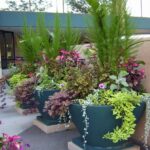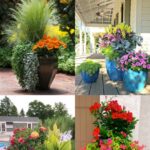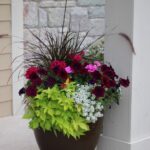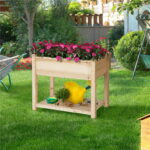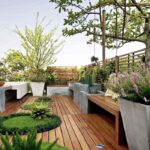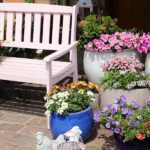Garden planters are an essential element for any outdoor space, providing a creative and versatile way to showcase plants and flowers. When designing a garden planter, there are several key factors to consider to ensure not only aesthetics but also functionality and durability. From material selection to the placement of the planter, attention to detail is crucial for crafting a successful garden design.
One of the first considerations when designing a garden planter is the material. Planters come in a variety of materials such as wood, ceramic, metal, and plastic. Each material has its own benefits and drawbacks, so it’s important to choose one that fits your aesthetic preference and practical needs. For a more rustic look, wooden planters are a popular choice, while metal or ceramic planters can add a modern touch to a garden.
Another important aspect of garden planter design is the size and shape of the planter. Consider the size of the plants you want to showcase and the space available in your garden when selecting the dimensions of the planter. Large planters can make a statement and create a focal point in the garden, while smaller planters are perfect for adding a pop of color in smaller spaces. Additionally, the shape of the planter can impact the overall design of the garden, so choose a shape that complements the rest of your outdoor décor.
Placement of the garden planter is also key in the design process. Consider factors such as sunlight exposure, drainage, and accessibility when determining where to place your planters. Plants have specific sunlight and watering needs, so make sure to place your planters in an area that meets these requirements. Additionally, ensure that there is proper drainage to prevent waterlogging, which can lead to root rot and other issues.
Incorporating different levels and heights in your garden planter design can add visual interest and dimension to your outdoor space. Consider mixing different sizes and types of planters to create a dynamic and layered look. Use taller planters as a backdrop for smaller planters or group planters of varying heights together to create a cohesive and harmonious display. Experimenting with different levels can help create a visually appealing and aesthetically pleasing garden design.
Lastly, don’t forget to consider the maintenance requirements of your garden planters when designing your outdoor space. Planters need regular watering, fertilizing, and occasional repotting to ensure the health and longevity of your plants. Choose planters that are easy to access and maintain, and remember to consider the time and effort required to care for your plants when designing your garden. By carefully considering these factors, you can create a beautiful and functional garden planter design that enhances the overall look of your outdoor space.



